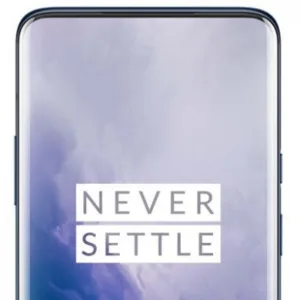One of the friends that I met last week at SID’s Display Week last week (and there were a lot!) was Dr Ray Soneira of DisplayMate Technologies. He’s been looking closely at the OnePlus 7 Pro smartphone and the result is not good for the most premium brands. Is it the beginning of the end for visual differentiation?

Up to now, the suppliers of the most premium smartphones, Apple, Samsung and Huawei, in particular, have been able to differentiate their devices by having displays that looked much better than their competitors. A lot of smartphones are sold in retail environments and there is no doubt that the quality of the display was a significant part of the purchase decision. However, Ray’s test of the new 6.67″ diagonal OnePlus smartphone has shown that its display performance is up among the best and has won the DisplayMate ‘Best Smartphone Display Award’. (There is not just one of these, the title is given to any device reaches the highest level of performance (A+) and includes the flagship phones from the three biggest brands, the Galaxy S10, the iPhone XS and the Google Pixel 3 XL).

OnePlus has used a flexible OLED with curved edges, but has, according to DisplayMate, matched or set ten new records for colour and image performance. They are:
- Highest Absolute Color Accuracy (0.8 JNCD) – Visually Indistinguishable From Perfect.
- Highest Image Contrast Accuracy and Intensity Scale Accuracy (2.20 Gamma) – Visually Indistinguishable From Perfect.
- Smallest Change in Peak Brightness with the Image Content APL (1 percent) – Visually Indistinguishable From Perfect.
- Smallest Shift in Color Accuracy with the Image Content APL (0.3 JNCD) – Visually Indistinguishable From Perfect.
- Smallest Shift in Image Contrast and Intensity Scale with the Image Content APL (0.00) – Visually Indistinguishable From Perfect.
- Largest Native Color Gamut (111% DCI-P3 and 140% sRGB / Rec.709).
- Highest Contrast Ratio (Infinite).
- Lowest Screen Reflectance (4.6 percent).
- Smallest Brightness Variation with Viewing Angle (22% at 30º).
- Highest Visible Screen Resolution 3K (3120×1440)
(DisplayMate has an exhaustive report online, so rather than reproduce it here, we have linked to it)
Of course, with five of these factors already ‘visually indistinguishable from perfect’, improving them will make no difference to users. Given that there is little or no content available with wide gamuts beyond P3, that new win won’t make much difference, either. Nor will ‘infinite contrast’ as that applies to all OLEDs (and is why the IDMC, under the aegis of SID, is looking at other ways to measure contrast). Screen reflectance in the OnePlus is good, but in the same range as other high end phones, such as the iPhones. Ray was talking at SID about new add-on products for the iPhone that could improve that feature and we’re looking at that for a future article on Display Daily.
About the only negative point for DisplayMate was that the phone has a noticable shift of blue at 30 degrees viewing angle of 5.9JNCD. Given that phones are often hand-held and can be adjusted for good viewing, that’s unlikely to be an issue for users. DisplayMate also said that colour shifts in the blue region are usually less visible than shifts in other colours.
Now, of course, OnePlus will be buying in the smartphone OLED from, probably, Samsung, given both that company’s dominance of the OLED market for smartphones and given the distinctive ‘diamond’ sub-pixel configuration. However, according to the results, the display has been well integrated into the smartphone to give support to the ICC colour management system that modifies the gamut of the phone depending on the content currently being shown.
At the time of writing, there was much discussion in the media about President Trump’s Executive order against Huawei and the decision by Google to withdraw support and for the three top companies, that is likely to be a much more important topic in the short term.
However, in the longer term, the problem for the big brands is how to differentiate when the whole of the front of the device is a display and they all start to look the same as more and more brands get to the ‘perfect’ rating. Ray believes that the performance in high ambient light conditions, a hot topic for him for many years, may be the big differentiator. He may be right, but most retail stores are not outdoors, so users may not fully appreciate better performance outside. (BR)

